
Practices of Care for the Elderly in Rural Community-Imbabura Ecuador
*Corresponding Author(s):
Sara María Rosales RUniversidad Técnica De Norte Ibarra. Carrera De Enfermería, FCCSS, Ecuador
Email:smrosales@utn.edu.ec
Abstract
The subject of the elderly has been shown as an important research edge in the last two decades, especially if it is considered that this population has experienced considerable growth, in response to a public policy that focuses on elements that support and achieve greater hope of life. In Latin America and the Caribbean, the population aged 60 and over is increasing steadily, seeing it as a generalized process of aging of demographic structures that leads to an increase in older adults. The objective of this research was to determine the level of knowledge, attitudes and practices of caring for the elderly in families of the rural community San José de Cerotal Antonio Ante - Imbabura 2017. Cross-sectional descriptive study, non-experimental mixed design, which included a sample made up of 48 older adults, in the months of January to June 2017, sociodemographic variables were collected that are related to knowledge, care practices and social consolidation with the family, for which a self-authored survey was applied that was validated by experts and consisted of 23 items. Results. Most of the participants were indigenous married women between 40 and 64 years old, housewives, with an incomplete level of primary education, they present a low level of knowledge in caring for the elderly. Conclusion. It is shown that more than 80% of the investigated caregivers reflect a lack of knowledge in care practices, because they have not received training, and they also do not have financial or emotional support from the family structure.
Keywords
Aging; Care; Elderly; Knowledge; Older adult
Summary
The issue of the elderly has been shown as an important edge of research in the last two decades, especially if it is considered that this population has experienced considerable growth, as a response to a public policy that focuses on elements that sustain and achieve a longer life expectancy. In Latin America and the Caribbean, the population aged 60 and over is steadily increasing, seeing it as a generalized process of aging of demographic structures leading to an increase in older adults. The objective of this research was to determine the level of knowledge, attitudes and practices of care for the elderly in families in the rural community of San José de Cerotal Antonio Ante - Imbabura 2017. Cross-sectional descriptive study, mixed non-experimental design, which included a sample made up of 48 older adults, in the months of January to June 2017, sociodemographic variables were collected that are related to knowledge, care practices and social strengthening with the family, for which a self-authored survey was applied that was validated by experts and consisting of 23 items. Results. Most of participants were women between 40 and 64 years old married indigenous, housewives, with an incomplete level of primary education, have a low level of knowledge in care of older adults. Conclusion it is shown that more than 80% of the caregivers investigated reflect a lack of knowledge in care practices, because they have not received training and do not have economic or affective support from the family structure.
Introduction
The phenomenon of ageing in the world responds to socio-cultural, political and economic changes that have had an impact on birth and population fertility rates. In Latin America and the Caribbean, the population over 60 years of age is expected to increase steadily over the next few decades, with an increase of 57 million Older Persons (PM) projected between 2000 and 2025, and between 2025 and 2050, this increase is estimated at 86 million. Along with the increase in this age group, population envejection brings with it an increase in longevity, with greater life expectancy and new needs to be addressed by the different sectors linked to the Populations. Greater.
The World Health Organization [1].
In the current perspective of the approach to this issue that refers to the elderly, the debates around the concepts of aging and its subjects are hegemonized: the elderly. Undoubtedly, the issue-problem must be extended towards an almost natural bias, studying it in and from the family environment, this possibility, in these modern times of conflicts, is redirected because it is significantly rooted in the family groups, especially in the most prone and poor. Most households of older adults, due to their need and economic weakness and poor access to health systems, are the most likely to suffer these effects.
Based on these considerations, many countries in the developing world are facing a rapid acceleration in population ageing, or will do so in the near future. So far, this has generated little interest, both among social analysts and politicians. The ability of States to provide support to their economically passive populations. The Argentine economy is one of the few developing economies that has already suffered a rapid demographic aging and, therefore, it is instructive to see how the State and other actors have faced this challenge [2].
In analyzing the economic crisis and comparing them with the current moment, UNICEF reviews the effects generated by the 2008 recession in the countries of the European Union and the OECD.
This study highlights that, with the increase in unemployment and the tightening of working conditions, households were affected by their family income, especially those with two children or more, as they spend 40% more than families without children. If other factors are added, for example, single-parent families, the vulnerability can be much greater. The most common effects due to the lack of income in families were reduction of daily nutritional intake and consumption of nutritional supplements, in addition to cuts in daily activities. Many of the effects on the aging population can have irreversible consequences on development and therefore on their care. It is worth mentioning that, in Mexico, for example, due to the recession of 2008, one of the main effects of the elderly population was precisely the poor diet due to the lack of income of families to guarantee adequate food [3].
In this context, social vulnerability is defined as the lack of protection of a group when it faces potential damage to its health, threats to the satisfaction of its needs and violation of its rights for not having personal, social and legal resources [4]. In the family, all members can contribute to the well-being of the adult mayor, in addition to organizing themselves based on the needs of the structure, in order to promote, support and improve the laws that take into account the stages of development of human beings, and in particular that of the elderly to ensure from this consideration for their safety in a stable family, at work, in the streets and any space of coexistence, since they need special protection. These groups require special attention, according to the WHO (World OSO)it is estimated that: 1 in 10 older adults suffer from abuse and neglect, but this figure could be even higher because it is estimated that only 1 in 24 cases is reported [5].
As in the rest of the world, Ecuador has a population in rapid aging whose "life expectancy is 75 years, the social security, health and economic needs in old age increase significantly, so they require measures in terms of public policies, which guarantee and are inclined to these people do not fall into poverty and abandonment during the last stage of their lives. Faced with this situation, the Ministry of Public Health, as the Health Authority, guarantees compliance with the health rights of the Ecuadorian population, and based on the principles of equity and justice, executes and implements "THE MANUAL FOR CAREGIVERS OF THE DEPENDENT ELDERLY PERSON", a document that provides information to caregivers, to provide individualized attention, with quality and warmth, with dignity and respect to older adults in situations of dependency, with the purpose of improving their quality of life and preventing complications [6].
In this same sense in this process the support and significant support of the family is very relevant, the family is the most important organization in society, from this edge the elderly should not dissociate themselves from this social structure, although the care they require due to their degree of dependence and / or disability, So the options to meet your basic needs are focused on the care that each family can provide. However, the change in new family structures is one of the phenomena that accompanies the demographic transition and therefore the deterioration of attachment and protection to the elderly population.
In this way, the responsibility and competence of governments around the world is to enrich and realize the principles and values reflected in a developing society, in the current moments that this population is not respected or valued, the state must provide technical and organized assistance aimed at improving the quality of life of older adults, groups and communities, focusing and implementing public policies aimed at older adults who often suffer situations of family abandonment and are victims of family disengagement being vulnerable to being stripped of their assets and continuing their life in places where they are treated in an inadequate way, from that base one of the fundamental pillars in the intervention is the family, as a means for care and its defense, taking into consideration that your family is an extremely important point of reference.
Materials and Methods
The research process was developed with a mixed approach, through a non-experimental, descriptive and cross-sectional study. The population consisted of 48 adult’s mayores of a rural community of the canton Antonio Ante province of Imbabura, Ecuador, during the months of January to June 2017. The data were collected through a questionnaire, which consisted of 23 closed and multiple choice questions that are clearly related to the objectives, as well as to the variables defined in this research. The questionnaire used was prepared by the authors of the research. The instrument made it possible to explore problem areas of life and evaluate the level of knowledge and practices of the care of the Elderly. It is worth mentioning that this questionnaire has been validated by professional experts in the health area who have high levels of knowledge, sensitivity and specificity of the subject being reflected in the results of the study, in addition an observation sheet was designed that was applied at the same time as the survey and in a personalized way to each caregiver in the same that the care practices of this population group were evaluated.
The application of the questionnaire was carried out in the support of a previous pilot test which consisted of the application of the validated questionnaire to a group of 10 caregivers of the investigated community, in which it was possible to verify that there is a low level of knowledge in this group, this response gave way to the application of the instrument and observation guide to the entire study population and the subsequent analysis of the results obtained.
The organization and statistical processing of the data was done through the Microsoft Excel program, then proceeded to elaborate graphs that allow to detail the results and thus facilitate the analysis. Statistics of the descriptive NIV were used through analysis of absolute frequencies and percentages. During the study, the corresponding ethical considerations of scientific research were taken into account. The participants expressed their agreement to be part of the population by signing an informed consent, in addition to the fact that no maleficent use was made of the information obtained (Figure 1).
Results
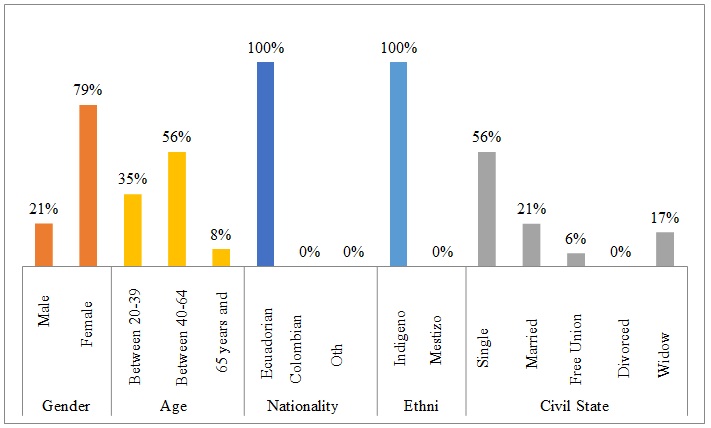
Figure 1: Characteristics Demographic: Gender age nationality ethnic group marital status.
Fountain: Survey aimed at caregivers of the elderly.
Fountain: Survey aimed at care givers of the elderly.
Prepared by: The authors, 2021.
It is observed that the majority of caregivers are women between the ages of 40-60, who are responsible for the maintenance of the home and the care of their children. In their entirety they are Ecuadorians of indigenous ethnicity and married marital status.
Surveys conducted by the National Institute of Economics and Census INEC in 2010, mention that in the canton Antonio Ante women occupy the highest percentage in the population. In addition, with regard to marital status, the majority of them are married in 42.4%, and mestizos in 75% [7], on this consideration it was observed that although it is true that the INEC data shows a minimum percentage of indigenous ethnicity it is important to mention that in the community investigated there is a totality of p indigenous ersonas of the Kichwa Otavalo nationality.
In the research carried out, a notable difference is observed between men and women who assume the role of direct caregivers, since to a large extent it is observed that it is women who take care of the elderly, this generates consequences for exhaustion in them, because they combine household chores without receiving support from the members of the family. As for marital status, people who are alone have more time to devote to the care of the elderly contributing to improve the quality of life, unlike married marital careers, care is provided by intervals of time, because the negativity of the head of household prevents having a close relationship between the elderly and caregiver, a situation that is reflected in the social structure and family nucleus (Figure 2).
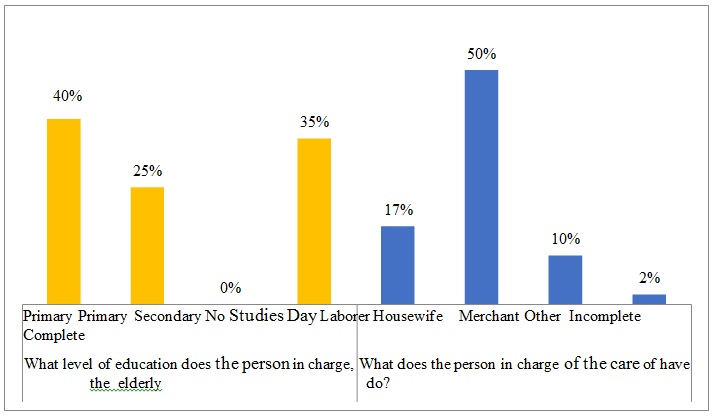 Figure 2: Education, Work.
Figure 2: Education, Work.
Source: Survey aimed at caregivers of the elderly.
Prepared by: The authors, 2021.
The graph shows that 40% of the surveyed population has not completed primary education, observing a high rate of illiteracy, the group with the highest representativeness in this research are dedicated to domestic activities, from this perspective when analyzing the data released by in EC in 2010 refiere that Imbabura reflects a weak decline in illiteracy [7].
The population investigated is not related to the data investigated, by how much and through the survey applied in the community investigated, it was observed that there is still a high rate of illiteracy in rural areas, in view of the fact that in this community the economic sustenance revolves around agriculture, livestock, and women focus on in household chores, being a housewife in this community is highly accepted by the population and in this consideration the submission exercised by men constitutes a prevailing factor in the role of women in the home reflected in emotional problems, and in the affective relationship between the elderly and the family (Figure 3).
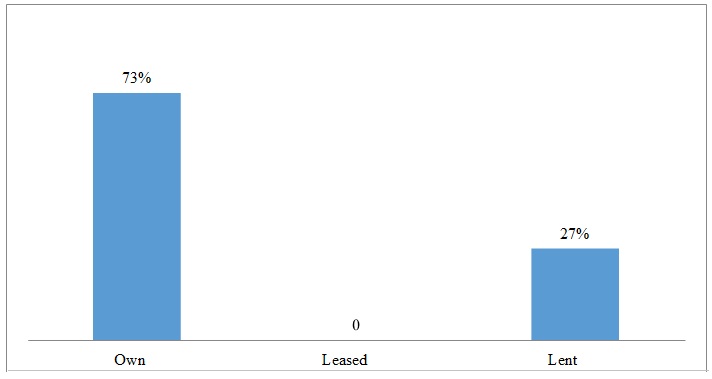
Figure 3: Housing.
Source: Survey of caregivers of the elderly.
Prepared by: The authors, 2021.
The vast majority of older adults investigated have their own housing, a smaller percentage live in borrowed homes. The National Institute of Statistics and Censuses (INEC), the governing body of population studies in this country, shows that 47.5% of the people who reside in this canton have their own homes, 35.5% have homes for rent, and borrowed housing [7]. These data are related to this research as it is evident that most older adults live in their own home.
In consideration and following this line of analysis, older adults decide to live in their own homes regardless of the loneliness to which they are exposed, they state that they avoid discomfort and become a family burden. This is undoubtedly a risk factor in view of the fact that living alone the elderly are prone to home accidents. With regard to the population that lives in homes of the family nucleus that they call it borrowed house is thanks to caregivers who consider that parents should have a better lifestyle, this condition occurs with the consent of the elderly (Figure 4).
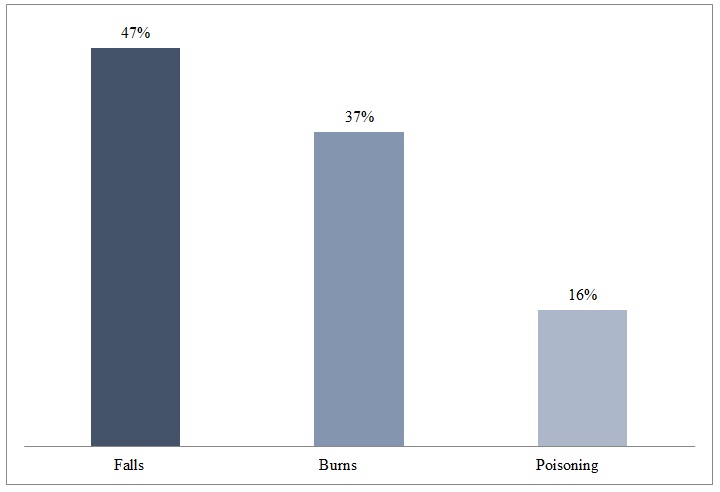 Figure 4: Level of Knowledge Adult Care activities daily living.
Figure 4: Level of Knowledge Adult Care activities daily living.
Source: Survey of caregivers of the elderly.
Prepared by: The authors, 2021.
For the purposes of this research, the daily activities of an older adult are defined as all the most complex actions that the person develops in their day to day, these activities need a functioning according to the styles and ways of manifesting their life, without a doubt these actions require care of the person himself, care of his body and performance and autonomy in the world around them. They involve own and motor skills, processing or elaboration to act in any environment, as well as to face problems presented. This is how functionality, from this perspective, has relevance for quality aging, by enabling better social relationships and contact with people in their environment, where total lack is a risk factor for morbidity and mortality. Thus, in the data obtained it was observed that 47% of the population suffered falls being a more common risk factor in the elderly, followed by 37% that refers to burns and poisoning. Referring to what was mentioned by Guadalupe Ruelas González, and V Nelly Salgado de Snyderen in their research work "Accidental injuries in older adults: a challenge for health systems", they show that of the total accidental injuries suffered by the population of older adults, the vast majority are falls with 44.7%, and 40.3% refer to burn accidents that occurred at home. They also mention that poisonings, poisonings and drownings represented a lower percentage [8].
The information provided by this research shows great relationship with the findings found in the investigated community when considering that the falls suffered by older adults represent a high percentage, due to different causes such as physical conditions of the house, which are floors of material earth that in rainy seasons deteriorate and cause accidents. Another relevant cause is the lack of implements that help the mobility of the elderly that in many cases are adapted and built according to the need and predisposition of the caregiver. Generally in this community wood stoves are used where older adults spend more time, this undoubtedly constitutes a latent risk to suffer burns due to the lack of help from the caregiver when preparing their food. Within this population under study if a considerable percentage was evidenced as a result of these accidents, when mentioning the investigation carried out in Mexico it can be considered that the accident due to poisoning is not high, demonstrating similarity with what was found in this community, but it is important to mention - that by not taking Precautions could be a major problem (37). Complications arising from injuries have an adverse impact on the family nucleus, the economy of the elderly, as well as on society in general and on health systems in particular. For example, the consequences of injuries in this population can vary from a hematoma to a fracture and, even, death, and when referring to the psychological whether there can be changes in the behavior and attitudes of the older adult. It can also be mentioned that it has been shown that the susceptibility of this population group to complications from falls is also related to the high prevalence of concomitant diseases and changes that occur during the aging process (Figure 5).
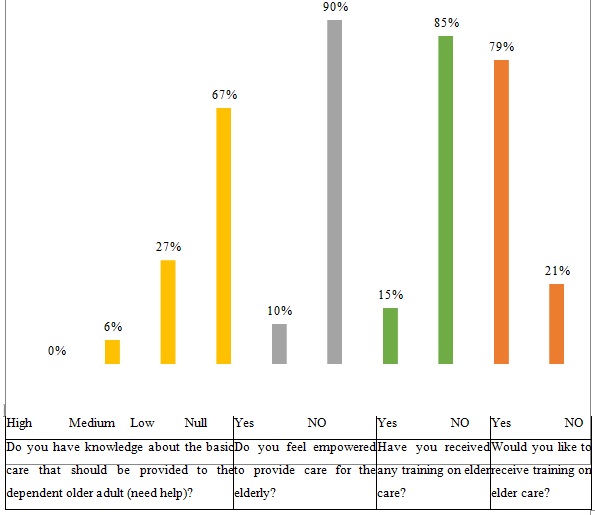 Figure 5: Knowledge and Training.
Figure 5: Knowledge and Training.
Source: Survey of caregivers of the elderly.
Prepared by: The authors, 2021.
More than 90% of the population investigated mentions not having knowledge regarding the care that should be provided to the elderly, they do not have training, they also indicate that they have not received talks about the care of the elderly, it was observed that 79% of people show interest in being educated. Data that coincide when referring to the research called "Education to family members on the management of the dependent older adult carried out in Cuba 2014" in which when focusing on this theme of Family Education on the care of the elderly, the data show that more than 70% of the people investigated have inadequate knowledge about care [9]. The results of Pozo and Cassanova Moreno are related to this research because caregivers do not know and do not have adequate training on the practice of care that an older adult needs for their autonomy and therefore their improvement in the quality of life from this point to avoid complications in their health, the care they provide is acquired in an empirical way, care that only refers to food. The lack of knowledge is due to the lack of programs and activities in the community, since education has been focused on the formal aspect (primary, secondary, and higher), but not on the formation of skills and care capacities that are aimed at improving the life of the elderly.
It is also relevant to mention that in Ecuador the state instance that has the rectory of public policy aimed at the care of the elderly is the Ministry of Economic and Social Inclusion (MIES) this instance trains technical personnel for the care of the elderly at their different levels of Bless you. The topics of focus are active aging, affectivity, home care, self-realization, spirituality, among others [10]. It is positive that the state provides training to technical personnel who are responsible for replicating this knowledge to the population through talks with a focus on care and relevance, but nevertheless in the findings Found in this research reflects that this edge is not covered in its entirety, taking into consideration that if there are people who consider it relevant to learn and acquire knowledge about the care of the elderly based on the availability of time without affecting the activities they perform daily at home.
Family care is usually offered by a primary caregiver, there are also several secondary caregivers who offer indirect help, and other household members who constitute support circles around the primary caregivers so you can mention relatives, friends, volunteers, etc., more or less close to the caregivers depending on of affinity, intimacy, camaraderie and closeness to homes. In short, it is attributed that the presence of close personal relationships with others, and the degree of integration of the adult.
Greater with the family environment, and having certain social and psychic resources permanently are positively related to health.
It is certainly important to take into consideration that the family is the largest provider of health care, it is a social institution with more prestancia and seniority, considered as a great reference of unity in which mutual interaction denotes a priority factor that affects to a greater or lesser degree to each of its members; by assuming the responsibility for the role of primary caregiver in the absence of another member of the household. The social, educational, labor function and the power of the family is and has been a fundamental determinant in the hegemony of the role of caregiver that is almost always assumed by a woman, mostly as a daughter-wife, or mother; role that has been assigned from the sexual division of labor conceived from a primitive society and landed in this modern society, in which the organization is centered by differences in gender issues; the same that focus on the relationships of affection and domestic activities , within the social structure, in front of the productive role of man visualized in the family economic dynamics (Figure 6).
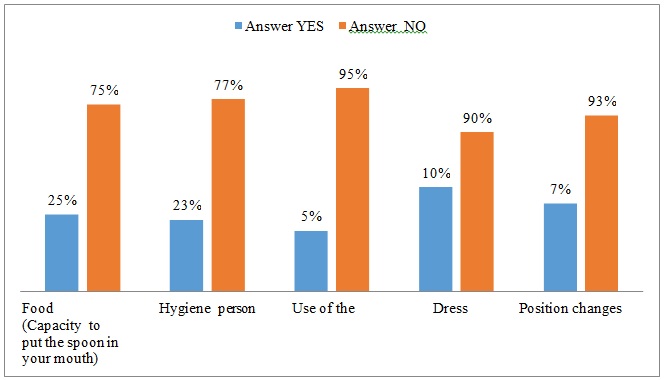 Figure 6: Support in Basic Activities.
Figure 6: Support in Basic Activities.
Source: Survey of caregivers of the elderly.
Prepared by: The authors, 2021.
The data obtained in the applied survey show that approximately 90% of caregivers do not help to perform the basic activities of daily living. By mentioning research.
Education to family members on the management of dependent older adults, carried out in Cuba/Camagüey in 2014, by Esperanza Marante Pozo; María de la C Casanova Moreno and collaborators show that more than 50% of people have inadequate knowledge about the care of the elderly. The main caregiver is the person who is most in contact with the health team and should be informed of the risks involved in taking responsibility for the care of the patient: loss of vital goals, stress chronic, frustration, anxiety, sadness, guilt. Frequently, the performance of this function involves an abandonment of their personal needs, the care of their own health and distractions while attending to the global deterioration of their relative. It is possible that for these reasons he dies even before the sick person [9].
The results of this study are comparable with those found since there is a high percentage of caregivers who do not help the elderly to perform day-to-day activities, state that they do not know about basic care, also mention that these factors are presented by the lack of an affective link between the family and the elderly, this causes the elderly to develop a high degree of self-dependence with limitations and therefore decreases their self-esteem and attachment to life. While the people who help to perform the basic activities of daily living do so in a way that they see fit since they have not received training on the care of the elderly. Thus, it is essential to achieve individualized attention to the elderly, from the salt system itself in coordination with the family, this will undoubtedly allow a better quality of life for both the caregiver and the adult caregiver, this will contribute to a good management of the totally dependent older adult (Figure 7).
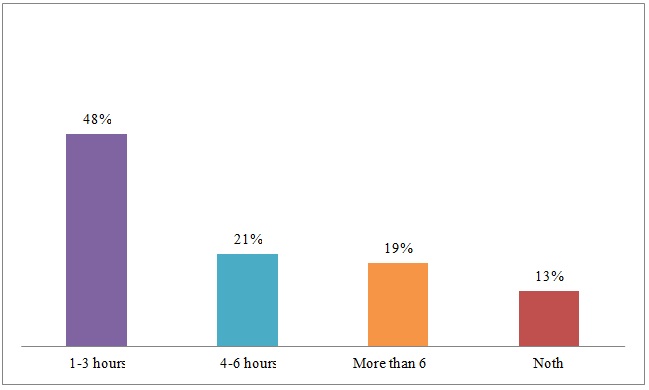 Figure 7: Risk Factors.
Figure 7: Risk Factors.
Source: Survey of caregivers of the elderly.
Prepared by: The authors, 2021.
It is observed that 48% of caregivers spend 1-3 hours caring for the elderly, followed by 21% of 4-6 hours, a small percentage referred to in 19% who spend more than 6 hours and it is shocking the data found when referring that there is a 13% of caregivers who claim not to dedicate time to the care of the elderly. According to the WHO, the vast majority of older adults spend their lives alone for various reasons, the most important cause being migration [11]. In addition, WHO says that the mandate of health services will grow due to the increase in life expectancy and disability, and family caregivers will not be able to meet all needs. Training more health workers and maximizing the functional capacity of older people can help limit years of dependence on others [12].
According to the current reality and when comparing what the WHO concludes, it can be seen that there is no similarity, because in this community there is mostly no migration and caregivers do dedicate part of their time to their care. There is no doubt about the neglect of the state in creating plans and programs for the benefit of the elderly, added to this the majority of caregivers are women housewives and their time is shared with daily household chores in combination with agricultural activities, activities that make it difficult to devote more time to care and accompaniment. It is important to limit what this entity says when mentioning that services must be adapted to the needs of the elderly, who require much more effective management, which not only improves their survival, but maximizes their functional capacity and reduces the years of dependence on others. From this basis the elderly people investigated manifest that they are abandoned in their own homes, it was evidenced that they lack basic care, personal hygiene is precarious, food is not good, and loneliness is the closest bond developed by them, being the most important cause in this practice of life, the lack of the affective bond between the elderly and the family (Figure 8).
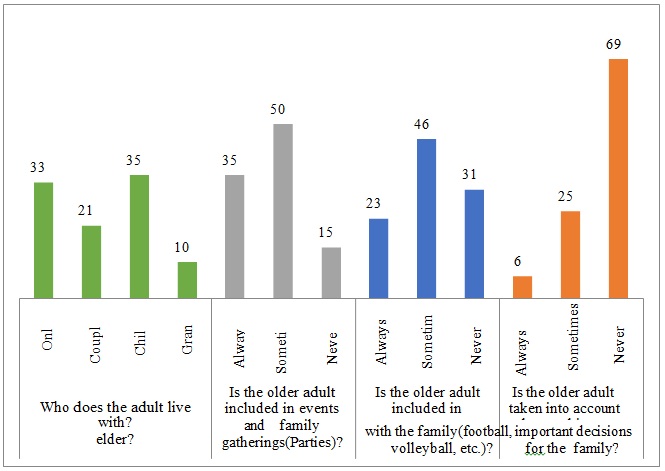 Figure 8: Relationship between the Elderly and the Family.
Figure 8: Relationship between the Elderly and the Family.
Fountain: Survey aimed at caregivers of the elderly.
Prepared by: The authors, 2021.
The results obtained show that most of those investigated live alone or with their children who do not include them in family activities and much less in important aspects such as decision-making. Data that do show similarity with what the National Institute of Economics and Census (INEC) mentions as the governing body of population studies in Ecuador, which refers to the fact that 49.2% of the total population of older adults live with their children, 15.2% with their husband and 10.7% live alone [13]. From the same line of research we mention what refers to the research The family and the elderly, carried out in Cuba in 2011 by placeres Hernández and León Rosales, research that affirms that the family is the one who covers the majority of the members of a society fulfilling the main functions of socialization with the elderly, developing expectations of being rewarded with affection, moral support and above all attention [14]. These data do not resemble the results of this research because it shows that older adults live alone due to their own decision and the lack of attention of their close relatives such as children, siblings, uncles, grandchildren etc. and if they do it with their children it is by obligation and not their own consent. In addition, it is evident that older adults who live in the company of their children do not present an adequate emotional stability or acceptance of their condition in the family, evidence found when applying the research instrument referred to in the observation sheet also evidenced that there is discrimination towards the elderly, it is pitiful to note that the. The same family and society stigmatizes him as an almost useless social being, becoming a non-thinking being and unable to contribute to society. Parents have expectations that their children will repay affection, moral support and financial help or care for the oldest in cases of illness. It is in the evolution of these practices of life and expectations of relationship in which there are several intergenerational conflicts between adult children and old parents.
The affective bond between the elderly and the family must be of quality and warmth creating affective connections open to communication and mood through daily coexistence, dedication of time to walks and walks, thus strengthening trust and effective communication. Approached from this approach of analysis, older adults always constitute a fundamental pillar in the family, since they provide knowledge and experiences that facilitate and help to make important decisions in the family (Figure 9).
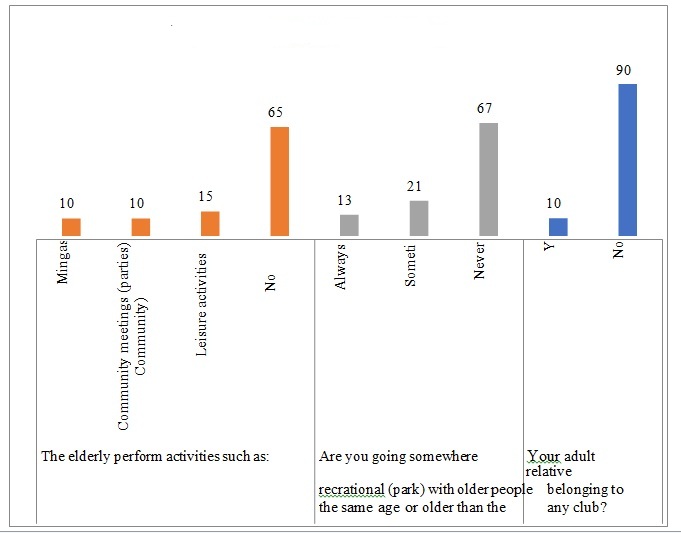
Figure 9: Social Relationship of the Elderly.
Source: Survey of caregivers of the elderly.
Prepared by: The authors, 2021.
If we start from the relevance that the family, in addition to being a group is a fundamental element for human development, we can visualize in this graph that the group investigated more than 67% of older adults do not live in a family. Ealizan social activities of relationship and uniqueness in social nuclei, so that almost the total of adults is not part of a center of attention, recreation and recreation. It is worth mentioning that in the research carried out in Mexico in 2014 I concluded that social relationships in the elderly should not only focus on maintaining a healthy relationship with the closest beings, which in general are the relatives in charge of their care, also, it should be stimulated for the elderly to create new social relationships and recover those that they lost throughout their lives [15].
From this base in this research the data refer that older adults are isolated from society, caregivers do not look at them as priority social entities, from their connotation they do not consider as vital that they relate to their environment, so their life is full of limitations remaining only in their daily survival without an optimal quality of life. That is so analyzing the experience of older adults over the years we see that this population group presents changes at the physical and mental level. So it requires special care from a transdisciplinary vision that includes not only the maintenance or life but also value the importance of its permanence and its own experience, focused on the social relationship making it feel like an active being in family and social environments. The findings of this research determine that the invested group does not have the support and readiness of their relatives when inserting them in entertainment environments, therefore, they do not agree to be part of spaces of integration and social relationship, a relatively small percentage is seen than if it does. An important determinant turns out to be the geographical situation, constituting the very difficult transfer, added to the time of availability of the caregivers, also the low economy that directly influences and that participation requires an economic contribution. Given this background, it is strategic to consider that caregivers should be aware of the activities carried out by the team of Primary Health Care facilitators, who work in this sector, and should also be an active part of the programs implemented in order to achieve the improvement of the quality of life of the elderly with the support of the corresponding instances. From this perspective and continuing with the analysis of the problem and found that not only remains on paper what the Political Constitution of Ecuador of 2008, which promulgates the law referring to the Ministry of Public Health as the National Governing Body of Health, which stipulates that public and private establishments must refer to the Health Care Model, with a focus on care programs for the elderly, as a fundamental aspect of joint work of the state and community in view of this population with emphasis on rural areas, developing health strategies that contribute to an integral well-being [16].
Conclusion
The results show that the majority of caregivers of the Elderly are married women who are in charge of household chores and are in an age range between 40 and 64 years, in their entirety they are Ecuadorians of indigenous ethnicity who have an incomplete level of primary education and without studies. It was also shown in this research that caregivers reflect a low level of knowledge because they have not received training in basic and instrumental activities of daily living such as food, hygiene, bathing, clothing, personal mobility, shopping, use of means of transport etc. , therefore, they indicate that they do not feel prepared to provide care that contributes to the improvement and maintenance of the health and independence of the elderly, since the care provided by caregivers is provided empirically as it was acquired in the community.
The authors of this research conclude that the factors that limit the good practice of care to the elderly investigated in a large percentage occur because they live alone, this reflects in them the condition of abandonment on the other hand the lack of a social relationship of affinity with their family, Added to this, the people who take care of it do not see it as an important entity excluding it from family gatherings, walks in the parks, and recreational activities. In addition, the results of this research allowed us to appreciate that most of the elderly adults do not have a responsible care that guarantees their quality of life, from this point of view the professionals who are part of this research consider that it is necessary that the governing bodies of execution of plans and programs Aimed at this population group investigated, they must design a planning that has the active participation of the population, in addition to promoting important strategies on knowledge and practices of care for families in this sector, in order that the people in charge of the elderly briden the necessary care. In addition, the care guide designed as a fundamental basic tool, must be landed in daily practice with the support of the leaders of the sector, talks and training in coordination with the governing body of health care must always be promoted, in order to to provide necessary and important information that provides general guidance on care and restitution of rights of the population under study.
Funding
The study was conducted with the researchers' own funds
Conflicts of interest
The authors declare that they do not exist.
Statement of Contribution
All authors participated during the research process and the preparation of the manuscript.
References
- Lara R, Lopez M, Espinoza E (2012) Instrumental activities of daily life in older people served in the primary health care network in the commune of Chillán Viejo-Chile. Revista Index de Enfermería 21: 2.
- Lloyd S, Peter G (1999) Old age and poverty in the developing world. Eds Buenos Aires: Ciepp.
- UNICEF (2020) Temporary expansion of welfare and social protection programs for vulnerable groups in response to COVID19.
- Guerrero N, Yépez M (2015) Factors associated with the vulnerability of the elderly with high health conditions. University and Health Magazine 17: 1.
- Carlos Slim Foundation (2018) Everyday Stories, Citizen Security.
- Ministry of Public Health of Ecuador (2011) Manua l for caregivers of the dependent elderly person.
- INEC (2017) Ecuador in figures-Imbabura Provincial Fascicle.
- Puente P, Cervantes O, Chávez R, Gonzales N, Guedea R (2017) Colimapm.
- Marante pozo E, Casova Moreno M, Nuñez Lopez E (2014) Education to family members about the management of the dependent older adult. Scielo 18: 1-4.
- Hour L (2013) The hour.
- WHO (2012) Bulletin of the World Health Organization.
- PAHO (2018) The number of older adults with long-term care needs will triple by 2050 in the Americas, PAHO warned.
- INEC (2009) Ecuador.
- Pleasures J, Rosales L (2011) The family and the elderly. Electronic Medical Journal 33: 4.
- Higher Institute of Social and Socio-sanitary Studies (2021) How to foster social relationships in older people.
- National Assembly of Ecuador (2008). Costitucion Politica del Ecuador montecristi: Official registration.
Citation: Rosales RSM, Castillo ARE, Narváez CCG, Mafla HLI, Vásquez CJC, et al. (2022) Practices of Care for the Elderly in Rural Community-Imbabura Ecuador. J Community Med Public Health Care 9: 101
Copyright: © 2022 Sara María Rosales R, et al. This is an open-access article distributed under the terms of the Creative Commons Attribution License, which permits unrestricted use, distribution, and reproduction in any medium, provided the original author and source are credited.

